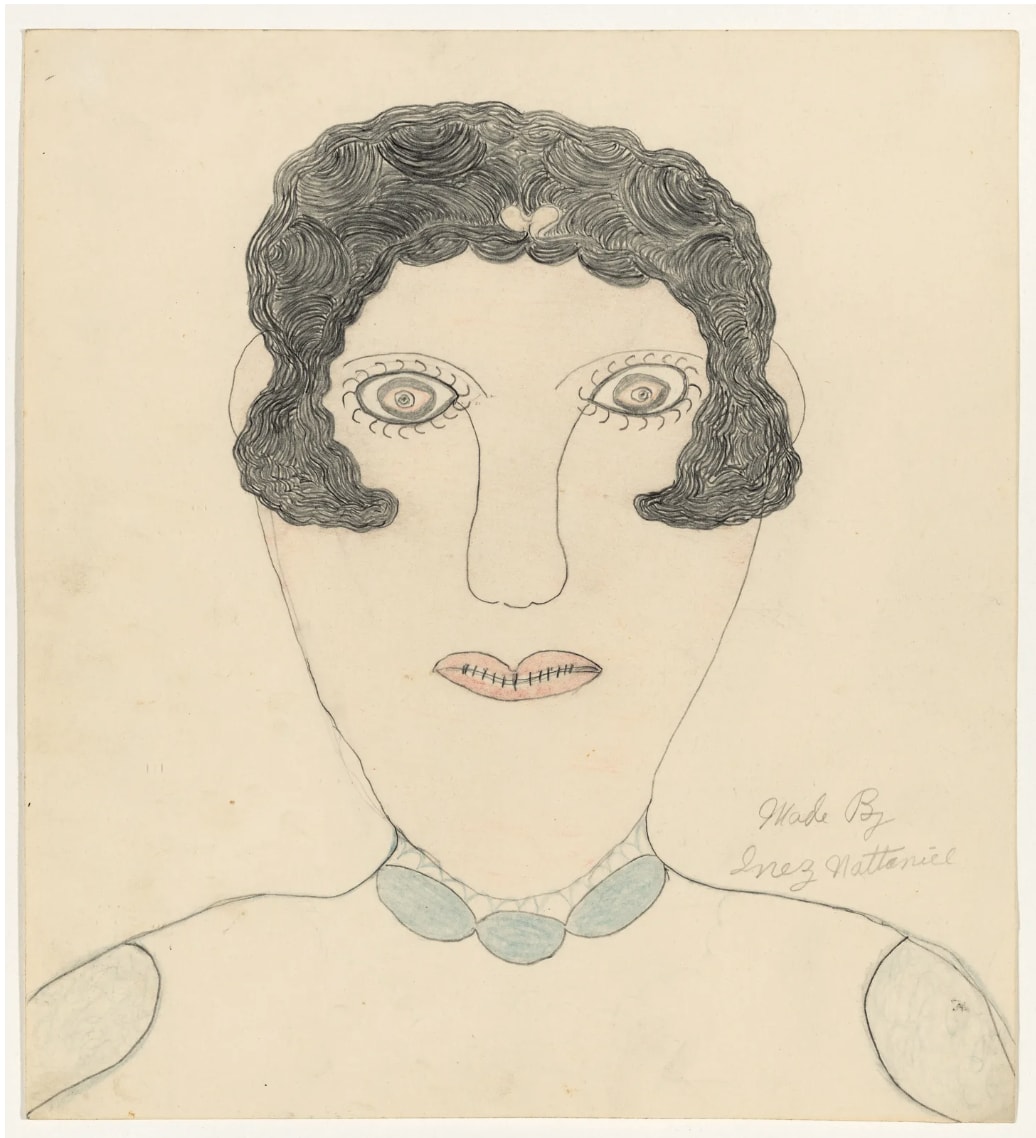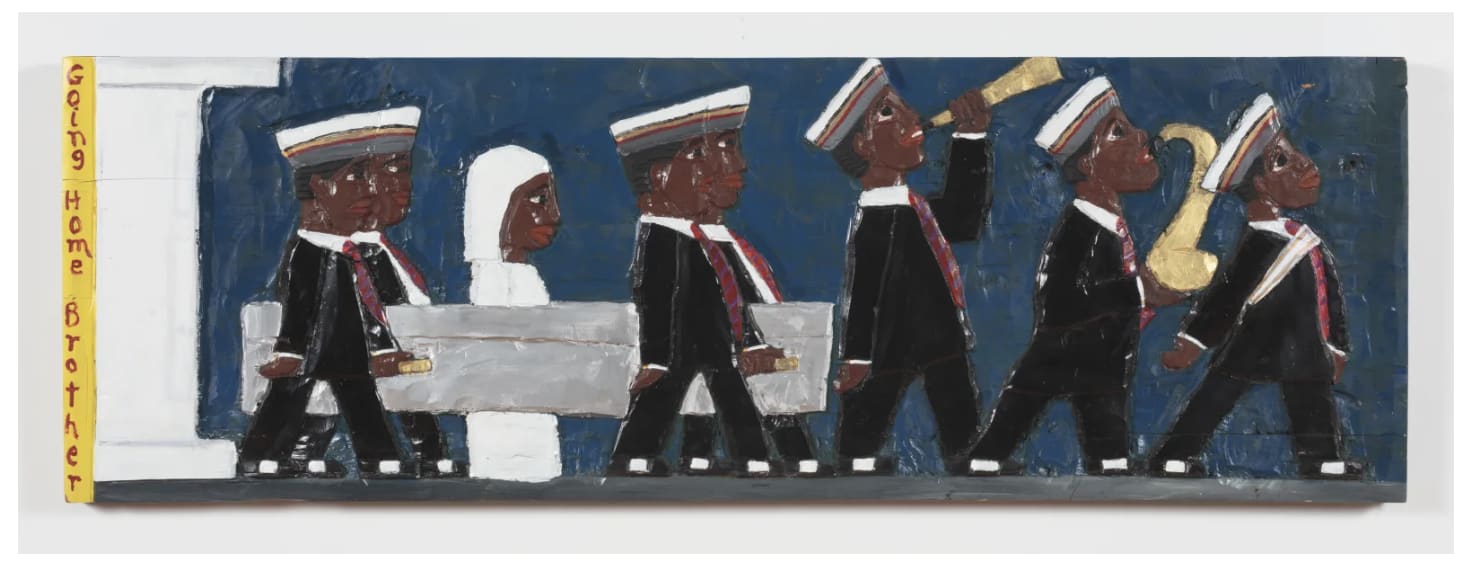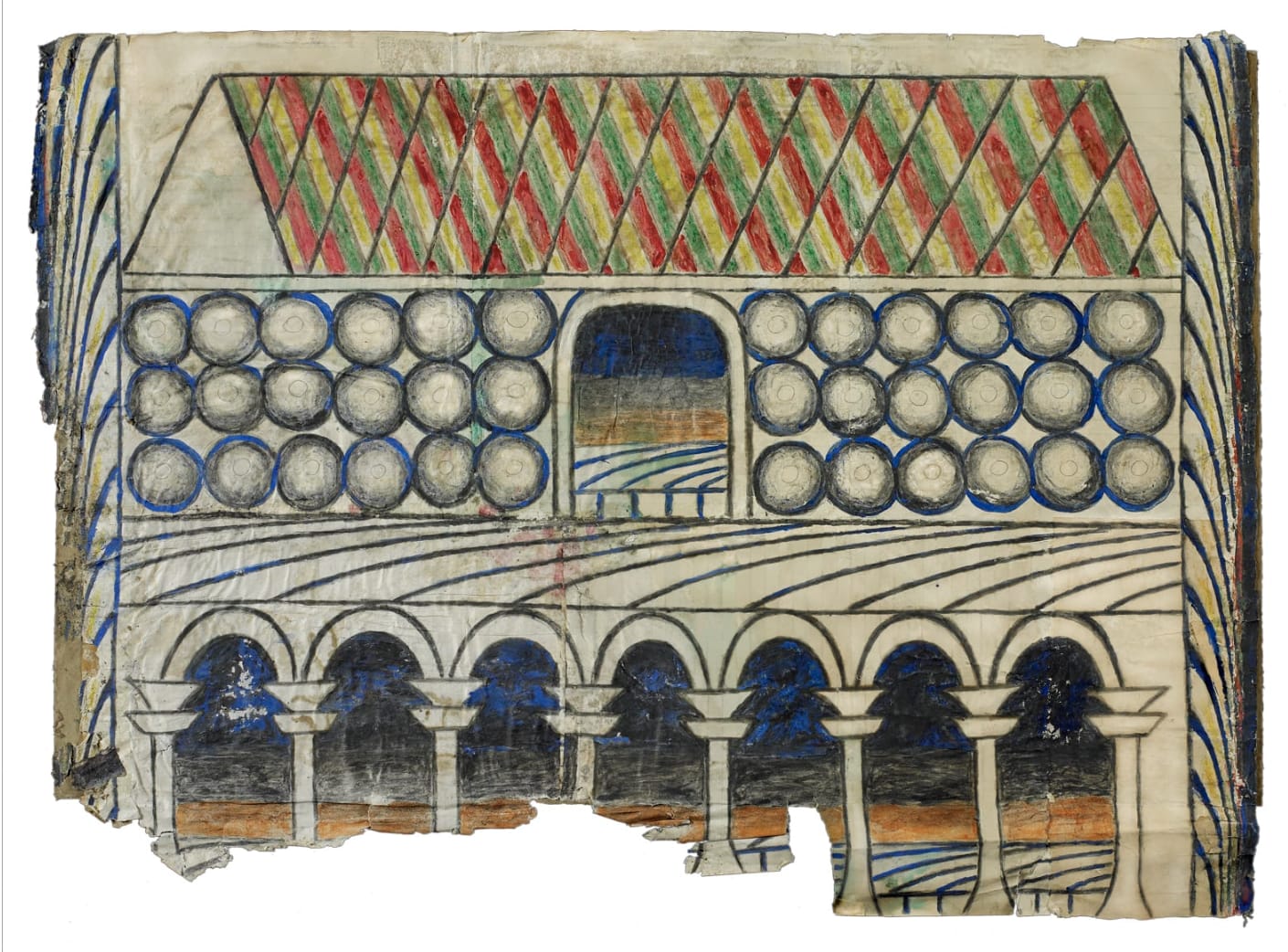On view at the Frances M. Maguire Art Museum at St. Joseph's University from January 16 to March 30, 2025, the exhibition, curated by Molly Dougherty, Director of the Keen Collection, features fifty-one works from the Keen Collection at Bethany Mission in Philadelphia, PA.
"Make or Break" highlighs the drawings, paintings, and carving of sixteen incarcerated or institutionalized artists who found their purpose, their voice, and an outlet for their immense creativity through artmaking under dire circumstances. Five served time in American prisons, five were involuntarily committed to American psychiatric hospitals, and six to European institutions.
These artists created astonishing bodies of work as an expressive part of their survival, some through institutionally-sanctioned arts programs, or the encouragement of individual champions, and a few in isolation and in spite of their onerous, often desperate, circumstances.
The self-taught artist Herbert Singleton, for example, channeled his tumultuous life experiences, including 13 years in the Louisiana State Penitentiary in Angola, into his art. The New Orleans artist moved from crafting walking sticks to producing politically charged artworks depicting urban chaos, biblical stories, and Voodoo. His work reflects the brutality, poverty, and racial inequality he witnessed, particularly after the tragic killing of his sister by police.
Like Singleton, most of the artists included in "Make or Break" suffered extreme violence, deprivation, and hopelessness. With the exception of Inez Nathaniel Walker, who was imprisoned for killing a man who had abused her, the incarcerated artists served lengthy sentences for various drug-related or violent crimes. Of the artists who experienced mental instability and commitment to psychiatric hospitals, some were held only briefly, others remain/ed in those institutions for the rest of their lives.
In essence, the artists featured in the exhibition confront the profound loss of autonomy experienced through incarceration and institutionalization, using artmaking as a powerful means to reclaim their freedom and affirm their humanity.
Separated from the prevailing cultural mainstream in prisons and psychiatric hospitals, these artists are paragons of "outsider art." Yet "outsider art" is one of many inadequate labels for something that is hard to define, since its artists do not share a certain style or adhere to specific tenets. As curator Ann Percy puts it, they act "individually, from within him- or herself from a particular cultural milieu, outside the parameters of art history or current critical discourse." But "outsider art" is generally understood to be art created outside or removed from the established culture by self-taught artists. And, as Percy observes, "the best outsiders produce art that is, variously, out of the ordinary, edgy, visionary, imaginative, proselytizing, obsessive-compulsive, or popular-culture-driven." Yet many are increasingly questioning the usefulness of the "outsider" designation. Roberta Smith called Martín Ramírez, for instance, "simply one of the greatest artists of the 20th century." The definitions of outsider and insider art continue to evolve, as reflected in the discussions captured in the catalog that accompanies this exhibition. The conversations held in preparation for the show explore the terminology associated with the art and the many complicated issues raised by the work.
All of the artworks in the exhibition are from the Keen Collection at Bethany Mission, a private collection located in the Spring Garden neighborhood of Philadelphia. One of the premier Outsider Art collections in the United States, the Keen Collection has hundreds of works. The artworks were acquired by Victor F. Keen as much for their visual appeal as their visceral impact. Keen is drawn to the stories they tell. "Make or Break" presents a close examination of fifty-one artworks (the genesis of imagery, lived experience, religious, ethnic, and geographical influences), the harsh realities and inequities faced by the artists, the institutional interventions that offered some of them succor and, most importantly, the scope of their exceptional achievements.
-- Molly Dougherty, Victor F. Keen


















